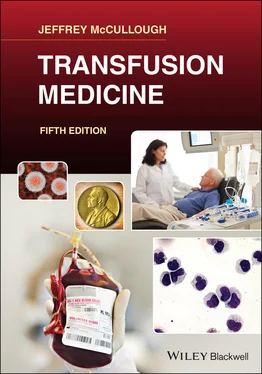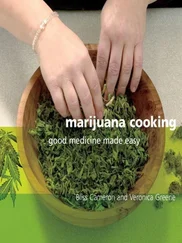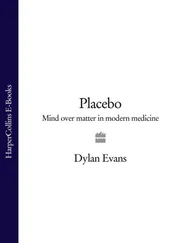1 Cover
2 Title Page
3 Copyright Page
4 Contributors
5 Preface
6 1 History 1.1 Ancient times 1.2 The period 1500–1700 1.3 The 1800s 1.4 First transfusions in the United States 1.5 The discovery of blood groups 1.6 Anticoagulation 1.7 Modern blood banking and blood banks 1.8 Cadaver blood 1.9 The Rh blood group system and prevention of Rh immunization 1.10 Coombs and antiglobulin serum 1.11 Plasma and the blood program during World War II 1.12 Plastic bags and blood components 1.13 Cryoprecipitate and factor VIII 1.14 Red cell preservation 1.15 Leukocyte antigens and antibodies 1.16 Platelet collection, storage, and transfusion 1.17 Apheresis 1.18 Granulocyte transfusions 1.19 Summary References
7 2 The Blood Supply 2.1 Worldwide blood supply 2.2 Amount of blood collected 2.3 Management of the blood supply 2.4 Other activities of community blood centers 2.5 The plasma collection system 2.6 Nongovernmental blood bank organizations 2.7 World Health Organization 2.8 Federation of Red Cross and Red Crescent Societies 2.9 International Society for Blood Transfusion 2.10 Regulation of the blood supply system References
8 3 Recruitment of Blood Donors 3.1 Demographic characteristics of blood donors 3.2 Motivation of whole blood donors 3.3 The donation experience and factors that influence continued donation 3.4 Whole blood donor recruitment strategies 3.5 Apheresis donor recruitment 3.6 Bone marrow donors References
9 4 Blood Donor Medical Assessment, Collection, and Complications 4.1 Blood collection 4.2 Medical assessment of whole blood donors 4.3 Collection of whole blood 4.4 Postdonation care and adverse reactions to blood donation 4.5 Therapeutic bleeding 4.6 Medical assessment of apheresis donors 4.7 Adverse reactions in apheresis donors References
10 5 Preparation, Storage, and Characteristics of Whole Blood, Blood Components, and Plasma Derivatives 5.1 Whole blood preparation and storage 5.2 Preparation of blood components from whole blood 5.3 Cryoprecipitate 5.4 Platelet concentrates—whole blood 5.5 Granulocytes 5.6 Irradiation of blood components 5.7 Hematopoietic stem and progenitor cells 5.8 Plasma derivatives 5.9 Pathogen‐inactivated blood components 5.10 Universal red cells 5.11 Blood substitutes References
11 6 Production of Components by Apheresis 6.1 Apheresis instruments 6.2 Plateletpheresis 6.3 Erythrocytapheresis 6.4 Leukapheresis for the collection of granulocytes 6.5 Leukapheresis for the collection of mononuclear cells 6.6 Leukapheresis for the collection of peripheral blood stem cells 6.7 Donor selection and complications of cytapheresis in normal donors 6.8 Plasmapheresis and source plasma References
12 7 Laboratory Testing of Donated Blood 7.1 Background 7.2 Safety of the blood supply 7.3 Blood component testing 7.4 Testing for transmissible diseases 7.5 Other laboratory testing 7.6 Summary References
13 8 Blood Groups 8.1 Red blood cell antigens and groups 8.2 ABO system 8.3 The Rh system 8.4 Other red cell blood groups 8.5 Antibodies to red cell antigens 8.6 Function of molecules containing red cell antigens 8.7 Platelets 8.8 Granulocytes References
14 9 Laboratory Detection of Blood Groups and Provision of Red Cells 9.1 Immunologic mechanisms of red cell destruction 9.2 Methods of detecting red cell antibody–antigen reactions 9.3 The antiglobulin test 9.4 Red cell compatibility testing 9.5 Red cell antibody identification 9.6 Strategies for making red cells available for transfusion 9.7 Approach to the patient with an incompatible crossmatch 9.8 Hemolytic disease of the fetus and newborn 9.9 Platelet compatibility 9.10 Granulocyte compatibility References
15 10 Clinical Uses of Blood Components 10.1 Blood component therapy 10.2 Transfusion of components that contain red blood cells 10.3 Transfusion of components and derivatives that contain coagulation factors 10.4 Transfusion of platelets 10.5 Granulocyte transfusion 10.6 Cytomegalovirus‐safe blood components 10.7 Graft‐versus‐host disease References
16 11 Transfusion Therapy in Specific Clinical Situations 11.1 Acute blood loss and trauma 11.2 Cardiovascular surgery 11.3 Hematopoietic cell transplantation 11.4 Solid organ transplantation 11.5 Transfusion of patients with paroxysmal nocturnal hemoglobinuria 11.6 Neonates 11.7 Pediatric patients 11.8 Transfusion therapy in hemoglobinopathies 11.9 Hemophilia and von Willebrand disease 11.10 Autoimmune hemolytic anemia 11.11 Pregnant women 11.12 Acquired immune deficiency syndrome 11.13 Transfusing patients with IgA deficiency 11.14 Autoimmune thrombocytopenia 11.15 Neonatal alloimmune thrombocytopenia 11.16 Neonatal alloimmune neutropenia 11.17 Autoimmune neutropenia 11.18 Rare blood types References
17 12 Patient Blood Management 12.1 Evidence‐based guidelines for transfusion 12.2 Physician and health professional education program 12.3 Mechanism to monitor blood use and adherence to guidelines 12.4 Preoperative Anemia 12.5 Preoperative autologous blood donation 12.6 Acute normovolemic hemodilution 12.7 Intraoperative blood salvage 12.8 Postoperative blood salvage 12.9 Use of hemostatic agents to minimize transfusion 12.10 Limiting blood loss for laboratory testing 12.11 Directed‐donor blood 12.12 Patient‐specific donation 12.13 Minimal donor exposure programs References
18 13 Pediatric Transfusion Medicine 13.1 Neonates 13.2 Pediatric patients 13.3 Modifications of blood products for neonates/children 13.4 Transfusion techniques in children and neonates 13.5 Special scenarios in pediatric transfusion medicine References
19 14 Pathogen Reduced Blood Products 14.1 Pathogen Reduction Technologies 14.2 Toxicity of compounds used for pathogen inactivation 14.3 Immunologic effects 14.4 Factors that influence transmission of infection 14.5 Microbial killing capacity of pathogen reduction therapy technologies 14.6 Pathogen reduced blood products 14.7 Pathogen reduced platelet products 14.8 Red cells and whole blood 14.9 Conclusions from in vitro and animal and observational human studies 14.10 Clinical trials of pathogen reduced components References
20 15 Techniques of Blood Transfusion 15.1 Obtaining consent for transfusion 15.2 Venous access and the venipuncture 15.3 Transportation and storage of blood 15.4 Identification of the patient and blood component 15.5 Blood administration sets and filters 15.6 Infusion Devices 15.7 Infusion solutions 15.8 Starting the transfusion 15.9 Rate and duration of transfusion 15.10 Nursing care of patients receiving a transfusion 15.11 Transfusion techniques for neonates and infants 15.12 Transfusion of hematopoietic stem cell products 15.13 Transfusion in the nonhospital setting References
21 16 Complications of Transfusion 16.1 Immunologic complications of transfusion resulting in transfusion reactions 16.2 Nonimmunologic hemolysis mimicking a transfusion reaction 16.3 Febrile nonhemolytic transfusion reactions 16.4 Allergic reactions 16.5 Pulmonary reactions, acute lung injury, and transfusion‐related acute lung injury 16.6 Anaphylactic reactions 16.7 Hypotensive reactions 16.8 Reactions to platelet transfusions 16.9 Reactions to granulocyte transfusions 16.10 Reactions due to bacterial contamination of blood components 16.11 Signs, symptoms, and management of a transfusion reaction 16.12 Immunologic complications of transfusion 16.13 Nonimmunologic complications of blood transfusion 16.14 Passive transfer of hypersensitivity References
22 17 Transfusion‐Transmitted Diseases 17.1 Syphilis 17.2 Hepatitis 17.3 HIV infection and AIDS 17.4 Other transfusion‐transmitted viruses 17.5 Transfusion‐transmitted bacterial infections 17.6 Transfusion‐transmitted parasitic and tick‐borne diseases 17.7 Other issues with transfusion‐transmitted infections 17.8 Other diseases of interest 17.9 Introduction of new test References
Читать дальше











